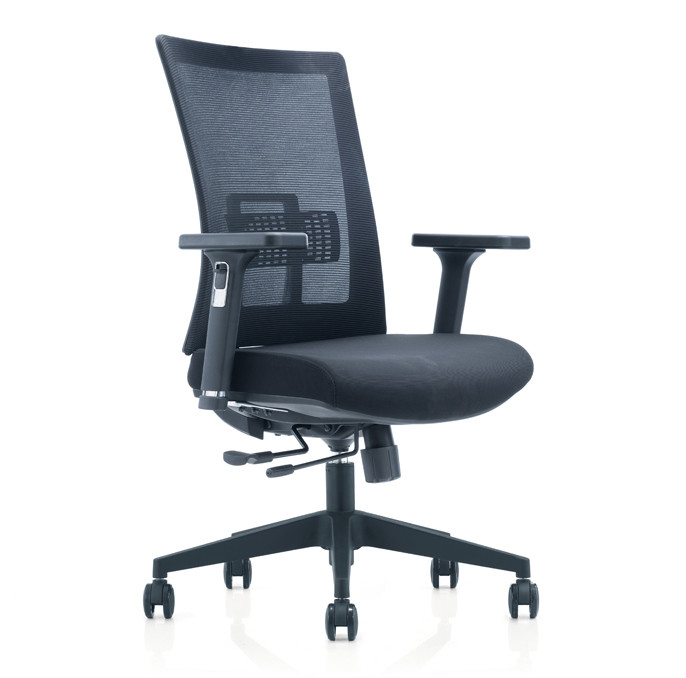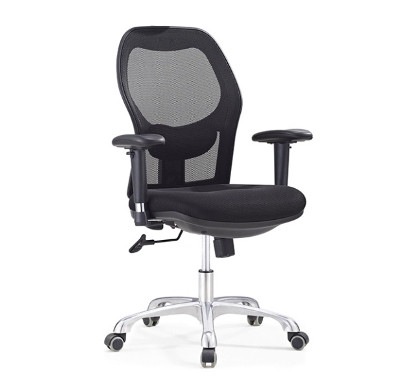
How to Keep Your Office Chair in Top Condition for Years
Introduction
Your office chair is one of the most used pieces of furniture in your daily routine. Whether you're working long hours or attending virtual meetings, a chair that stays in good shape ensures ergonomic support and long-term comfort. Neglecting basic maintenance can lead to premature wear and discomfort. In this guide, we’ll walk you through the most effective ways to keep your office chair looking and functioning like new—saving you from early replacements and frequent repairs.
1. Clean the Chair Regularly
Dust, spills, and daily use can quickly affect your chair’s appearance and hygiene. Use a vacuum cleaner or a microfiber cloth to remove debris from mesh or fabric, and a gentle leather cleaner or damp cloth for leather. Regular cleaning prevents buildup and staining.
2. Lubricate Moving Parts
Office chairs rely on mechanisms like swivel joints, height adjusters, and tilt functions. These parts benefit from occasional lubrication with silicone spray or light machine oil. This ensures smooth operation and prevents wear from friction.
3. Inspect Screws and Bolts
Over time, screws and bolts can loosen with regular movement. A quick inspection every few months can reveal what needs tightening. Ensuring all parts are secure helps preserve the chair’s stability and functionality.
4. Avoid Excessive Weight or Leaning
Chairs are designed to support specific weight limits. Repeatedly leaning too far back or applying uneven pressure can stress joints and bases. Use the chair as intended to avoid warping the frame or damaging mechanisms.
5. Protect the Chair’s Base and Casters
The base and casters take constant stress. Keep them clean and check for tangled hair, debris, or cracks. Replacing damaged wheels early can prevent strain on the chair’s frame and extend its life significantly.
6. Maintain Upholstery with Care
Mesh, fabric, and leather all require different care routines. Mesh should be dusted and vacuumed; fabric needs gentle upholstery cleaner; leather benefits from occasional conditioning to stay soft and resist cracking.
7. Store It Correctly During Breaks
If your workspace is shared or seasonal, proper storage matters. Keep the chair covered or in a dry environment away from direct sunlight or moisture. This prevents fading, mold, and material degradation.
8. Use on Appropriate Flooring
Chairs roll better and last longer on hard surfaces or protective mats. Carpet can strain casters over time. If you’re using a chair on carpet, consider a clear chair mat to ease movement and protect the wheels.
9. Don’t Ignore Minor Issues
Small problems like squeaking, loose arms, or stiff recline may signal bigger issues down the line. Fixing them early helps prevent further damage and keeps the chair comfortable and quiet.
10. Keep It Out of Harsh Conditions
Extreme temperatures, direct sunlight, or high humidity can harm both the upholstery and the mechanical parts of your chair. Keeping the chair in a climate-controlled environment helps preserve its materials and performance.
Additional Considerations for Longevity
11. Adjust It Correctly to Your Body
Using the wrong settings can lead to misuse and stress on the chair. Adjust height, tilt, and armrests to match your posture and desk setup. This not only helps your health but also reduces strain on the chair’s components.
12. Avoid DIY Repairs Unless Confident
While tightening bolts is fine, fixing tilt tension or replacing hydraulic components should be left to professionals. Incorrect repairs can lead to damage or even injury.
13. Clean Spills Immediately
Accidents happen. Whether it’s coffee or water, clean up spills right away. Delayed action can cause stains, odors, or even mold, especially on mesh or fabric surfaces.
14. Use Chair Covers if Needed
In high-use environments, chair covers can be a great way to protect upholstery. They're especially useful in shared workspaces or if you have pets at home that might jump onto the chair.
15. Avoid Standing on the Chair
Office chairs are designed for sitting—not for reaching high shelves or changing light bulbs. Using them as a step stool can damage the gas lift, base, or frame.
16. Replace Worn-Out Parts Promptly
Instead of discarding the whole chair, replace parts like arm pads, wheels, or the gas lift cylinder. Many office chair models allow part replacement, which is more cost-effective than buying new.
17. Rotate Usage if You Have Multiple Chairs
If you use multiple chairs or workstations, rotate their usage occasionally. This reduces wear and tear on any one chair, helping each last longer.
18. Follow Manufacturer’s Guidelines
Every chair comes with care instructions. Follow them carefully, especially if your chair has specialized materials or mechanisms that require unique attention.
19. Keep Pets and Kids Away When Not in Use
Pets scratching or chewing and kids spinning on the chair for fun can cause wear quickly. Keeping the chair out of reach when not in use can prevent damage.
20. Know When It’s Time to Upgrade
Even with the best care, chairs have a lifespan. If the chair starts affecting your comfort or posture, it might be time to invest in a new one—even if it still looks good.
Recommended Products

-
Sujaan Mesh Low Back Ergonomic Chair
This sleek, breathable mesh chair provides ergonomic support in a compact form, ideal for minimal maintenance and long-term use.
-
Mujaan Mesh Low Back Ergonomic Chair
Designed for daily comfort, the Mujaan chair combines mesh flexibility with durable construction, making it easy to clean and maintain.
Final Thoughts
Keeping your office chair in top condition doesn't require much effort, but it does require consistency. By combining a simple cleaning schedule with smart usage habits, you can maximize the chair’s lifespan and performance. Investing a little time in maintenance saves you money, boosts daily comfort, and supports better posture for years. Whether you’re working from home or managing an office, a well-maintained chair will always support your success.
FAQ
How often should I clean my office chair?
A general cleaning every two weeks and a deeper clean once a month will keep your chair in excellent condition.What should I use to clean mesh or fabric chairs?
Use a vacuum and a damp cloth or a mild upholstery cleaner specifically designed for mesh or fabric.Can I replace parts of my office chair?
Yes, many models allow replacement of wheels, gas lifts, and armrests without replacing the whole chair.Is it okay to use oil on the chair’s mechanisms?
Yes, a silicone-based lubricant or light machine oil works well for maintaining moving parts and preventing squeaks.


